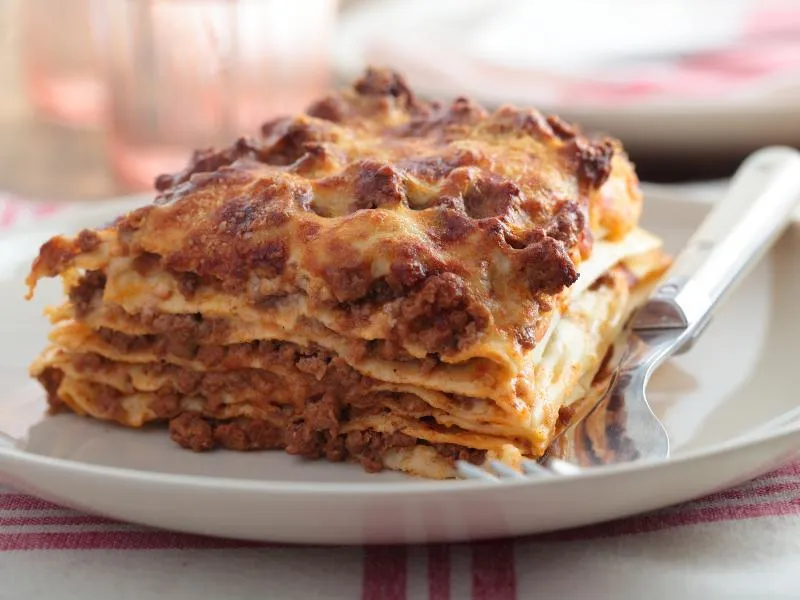Lasagna alla Bolognese
Layers of pasta, rich meat ragù, béchamel sauce, and Parmigiano-Reggiano cheese.
👉 View Authentic Recipe 👈
About This Dish
Lasagna alla Bolognese is one of Italy’s most iconic layered pasta dishes, originating from Bologna in the Emilia-Romagna region. Unlike southern Italian versions that use ricotta, authentic Bolognese lasagna features a slow-cooked meat ragù, creamy béchamel sauce, and generous amounts of Parmigiano-Reggiano between layers of fresh pasta sheets.
Traditionally prepared for Sunday family gatherings and special occasions, this hearty dish dates back to the late 18th century when it began appearing in cookbooks from the region.
The secret to exceptional lasagna alla Bolognese lies in the ragù, which should simmer for hours until the meat becomes incredibly tender and the flavors meld perfectly. While modern variations exist, traditionalists insist on using only beef and pork for the ragù, never tomato paste (only fresh tomatoes), and always finishing with authentic Parmigiano-Reggiano cheese.
🧑🍳 Analyzed by CucinaBot
Why This Dish Works
The multilayered construction of lasagna creates a perfect balance of textures and flavors. The slow-cooked ragù develops deep umami notes through the Maillard reaction, while the béchamel sauce adds creamy richness that carries flavor across the palate. The alternating layers create steam pockets during baking that cook the pasta perfectly while allowing flavors to meld.
Key Success Factors
- Resting Time: The 30+ minute rest after baking is crucial, not optional - it allows the layers to set and flavors to integrate
- Proper Reduction: The ragù should be thick enough that it doesn’t make the final dish watery
- Layer Thickness: Each pasta layer should be visible but thin (approximately 2-3mm when cooked)
- Golden Top: The final cheese layer must brown slightly for proper texture contrast
Common Pitfalls
Overcomplicated recipes often add unnecessary ingredients like ricotta, mozzarella, or garlic, which aren’t part of the authentic Bologna version. Many recipes also fail to emphasize the critical importance of properly reducing the ragù before assembly, leading to a soggy final product.
How to Judge Authenticity
When reviewing recipes, look for these markers of authenticity:
- Includes milk or cream in the ragù
- Uses a proper béchamel (not ricotta)
- Specifies thin layers of pasta
- Recommends significant resting time after baking
- Contains minimal herbs (just a hint of nutmeg in the béchamel)